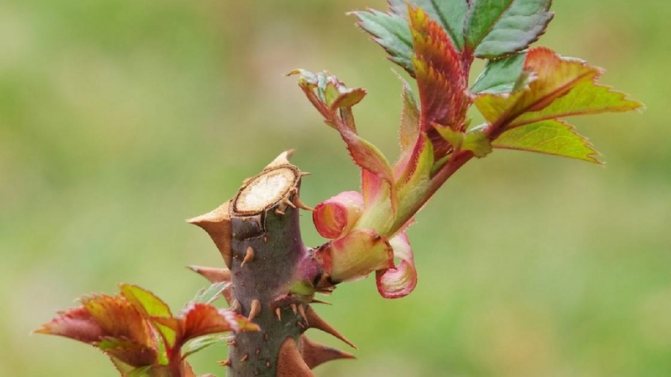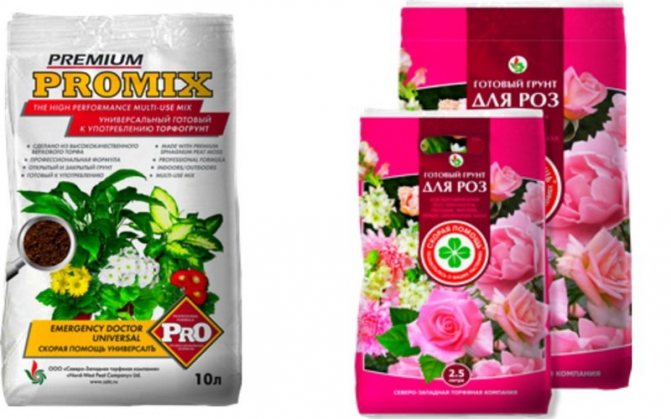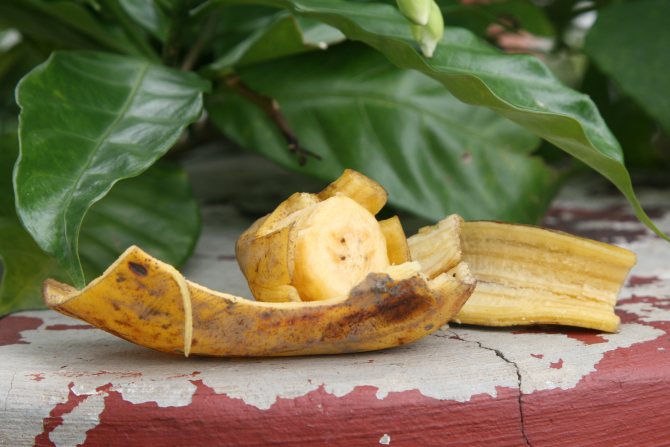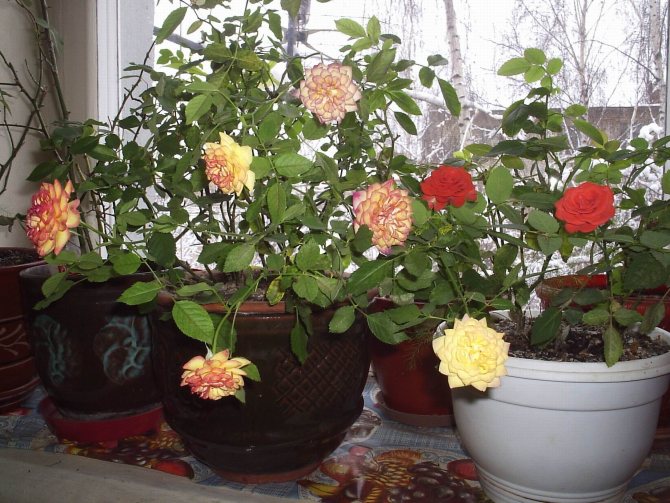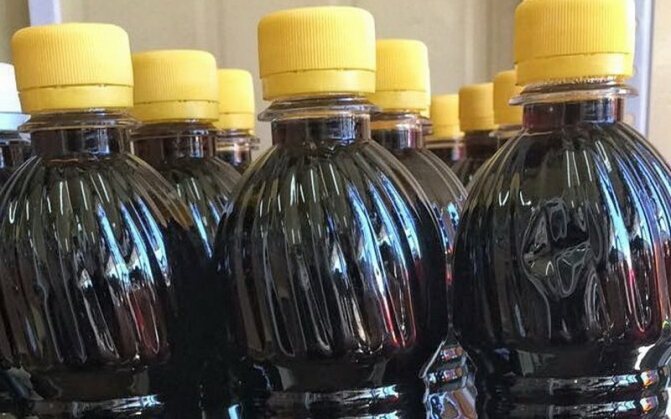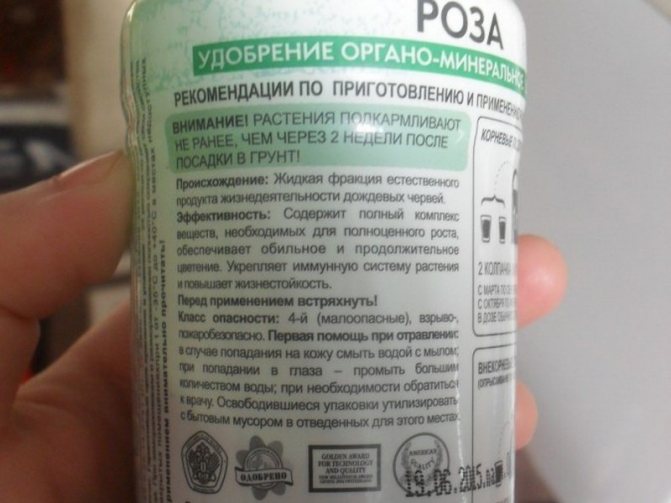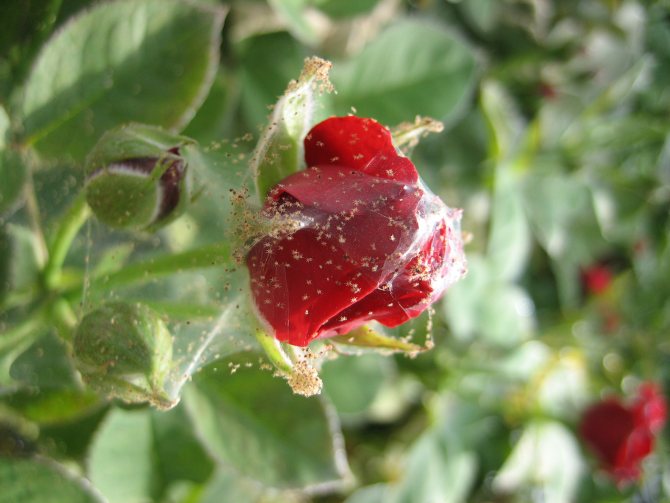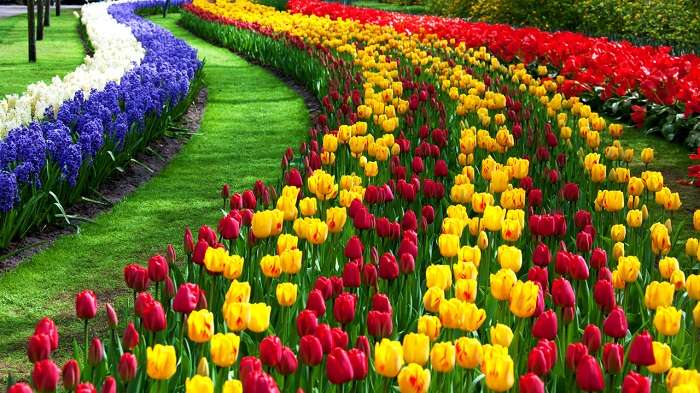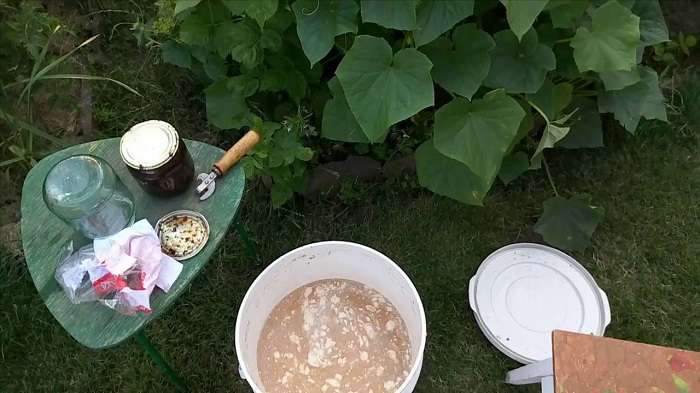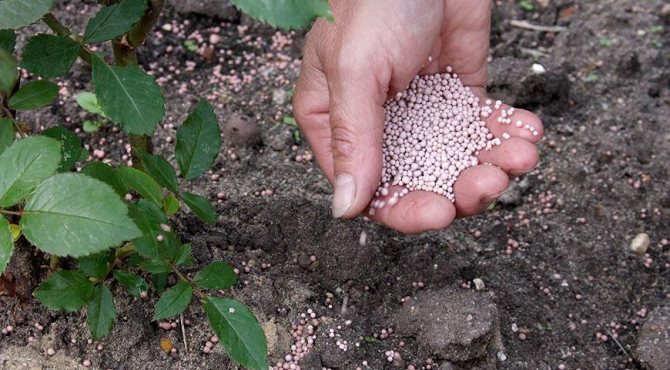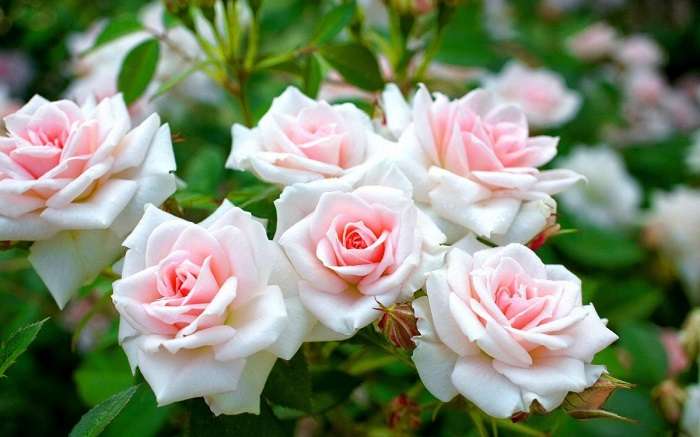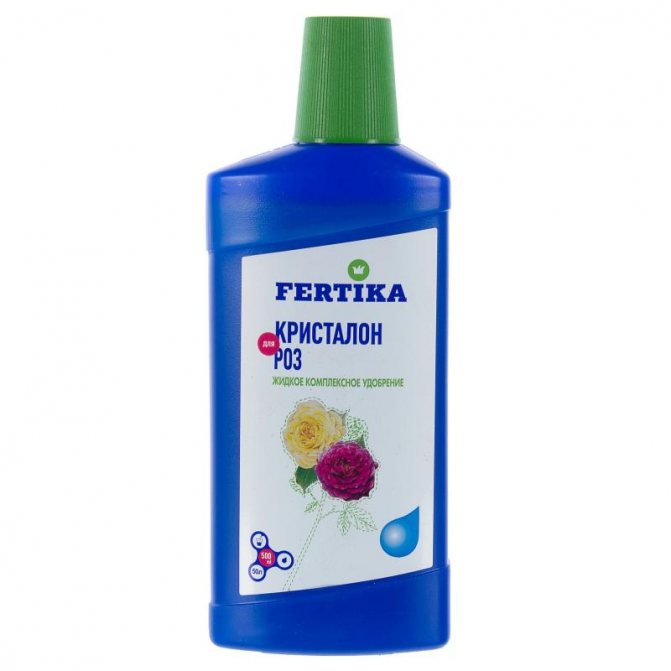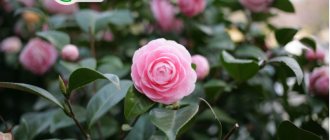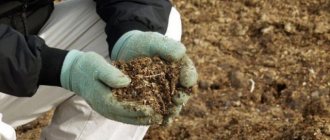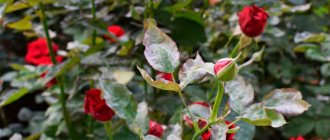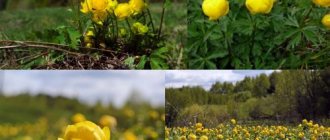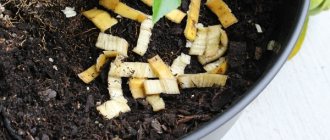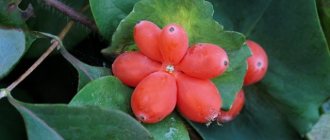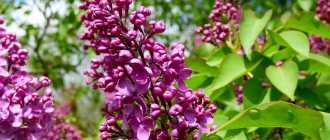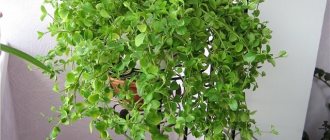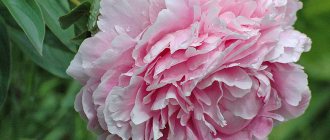A blooming rose bush on the site is the dream of any summer resident. Despite its capricious disposition and sharp thorns, the rose was and remains the queen of all flowers. But in order for the plant to please the eye with lush flowers, it needs proper care. Along with the right place and timely watering, it is of great importance to feed the roses in the spring, during the budding period. Fertilizers are organic and inorganic. Before starting the procedure, you need to figure out when and how to properly feed these delicate flowers.

Why do you need spring feeding of roses
Experienced flower growers unanimously note that feeding garden roses in spring is the main and very important. It is simply irreplaceable in the spring care of a capricious flower, not only the splendor of flowering depends on it, but also the general condition and health of roses.
Fresh articles for gardeners, gardeners and florists
How to grow petunia from seeds at home for seedlings
Planting carrots in spring sowing when to sow how to plant correctly
When to plant zinnia seedlings in 2019 according to the lunar calendar
Pruning an apple tree in spring for beginners in pictures step by step
Therefore, after winter, more than ever, top dressing is needed. When gardening, it is necessary to take into account the general condition of the plant, the climatic characteristics of the region and the condition of the soil.
Why is spring feeding of roses so necessary? There are a number of reasons for this:


Most flower growers prune their plants in the spring. The procedure is undoubtedly important, because it stimulates the growth of shoots, roots, helps to rejuvenate the bush, cleanse it of damaged and old branches, and also form a beautiful shape. However, after this event, the plant begins to intensively absorb useful and nutrients from the soil. And the lack of such substances negatively affects the state and vitality of the plant. Therefore, it is after pruning roses in spring that top dressing is so important.
Spring brings not only the long-awaited warmth and bright sunshine, but also changeable weather, which can stress the bush. The situation will worsen with a deficiency of nutrients in the soil. And the step-by-step feeding of roses will help the plant to overcome any bad weather.
After winter, the most undesirable "guests" of the garden awaken - pests and diseases. Healthy roses that are well nourished and grown in favorable conditions are able to withstand these guests.


After winter, roses are weakened, they need to adapt, wake up after hibernation, activate their forces for growth and future flowering.
In every garden and vegetable garden, impoverishment and depletion of the soil can occur. Depleted soil is clearly not good for delicate and capricious beauties.
Note! Timely and full-fledged feeding of roses at home in spring is the key to abundant, lush and beautiful flowering of plants.
Flower care
In addition to fertilizing, roses also need careful maintenance. Only in this case will the flowers be healthy and beautiful. One of the common problems faced by rose lovers is aphids. This garden parasite is very fond of rose bushes and can turn a lush and beautiful bush into an unsightly plant in just a few days.There are many methods to combat aphids, one of them was shared by an experienced gardener. You need to take branches of bitter wormwood and steam them with boiling water. Laundry soap solution can be added to the broth. The mixture should be sprayed with roses at the first sign of aphids.
The rose is rightfully considered the queen of flowers, and like all crowned persons she is extremely capricious and picky. It is for this reason that the care of rose bushes must be thorough and timely. With some effort and creating a comfortable environment for the roses, you can enjoy the beautiful view and scent of these wonderful flowers on your site throughout the summer.
(4 estimates, average: 5,00 out of 5)
What fertilizers are best for roses?
In modern floriculture, first of all, complex or combined fertilizers are used, which contain, in a properly balanced form, many nutrients that are very important for plants. It often makes sense to apply special fertilizers, the composition of which is developed and intended for specific types of plants, in this case, a nutrient mixture for roses.
In general, fertilizers are distinguished:
Organic fertilizers, in which organic substances are linked directly to organic compounds and gradually benefit the plant cells. Synthesis depends on many factors, such as soil moisture and temperature, the activity of microorganisms in it. Organic fertilizers contain higher concentrations of nutrients than natural fertilizers such as conventional compost, and it is also classified as organic fertilizer.
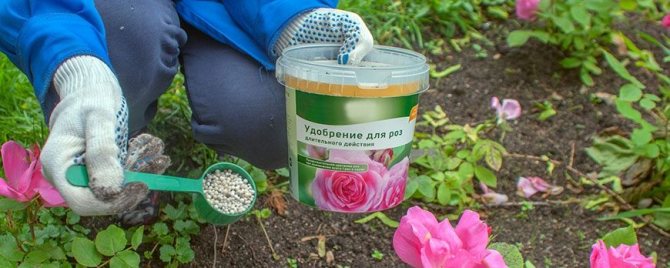

Mineral fertilizers contain nutrients consisting of more readily soluble compounds that give a much faster effect. It is worth noting that the danger of overdose in this case is significantly higher than that of organic fertilizers; it is also possible that nutrient particles are washed out.
Autumn liming roses
Roses prefer soil acidity close to neutral; a slightly acidic or slightly alkaline reaction is allowed (pH range 5.5 - 7.5). Increased acidity reduces the amount of available nutrients, impairs their absorption; foliage turns pale, petals lose brightness, flowering weakens, winter hardiness decreases.
On acidic soils in the fall, we carry out liming of the rose garden - at the end of the season (shortly before the soil freezes). Sprinkle Dolomite flour or Fluff Lime around the bushes. This event is required once every couple of years, or less often. The dosage depends on the acidity level of the site and the type of soil (we rely on the instructions for the preparation).
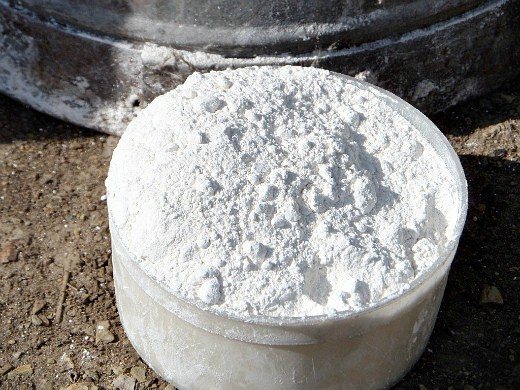

Mineral fertilizers for roses
Consider mineral fertilizers containing various substances:
- Potassium. Contained in potassium chloride or sulfate, potassium nitrate. It is enough to dilute 15-20 g of one of the fertilizers in water (10 l) to compensate for the lack of this element in the soil.
- Phosphorus. Contained in superphosphate. For 10 liters of water, take 30-40 g of this fertilizer.
- Nitrogen. Contained in ammonium or ammonium nitrate, urea. Dilute up to 20 g of nitrogen fertilizer in a bucket of water and feed the roses.
- Mixed NPK fertilizers. These are fertilizers that contain both potassium and phosphorus, nitrogen. These include nitrophoska, ammophoska and nitroammophoska. Dilute about 50-60 g of this fertilizer in a bucket and water the roses.
Attention! Wood ash can also be classified as mineral fertilizers. In addition to potassium and phosphorus, it contains magnesium and calcium. Thanks to the last element, ash is able to neutralize acidic soil. But often the cause of impaired growth and poor flowering is precisely the increased acidity of the soil, which does not allow roses to assimilate minerals.


Transfer
Roses are transplanted periodically to stimulate root growth.Carry out the process carefully so as not to damage the plant. Each time, a pot is required more than the previous one by 5 centimeters in diameter and height. It is believed that the best material for a pot is ceramic or clay, but natural material should be purchased, not gypsum fakes.
You should know it! You can tell a clay pot from a gypsum pot by the sound. A high-pitched sound comes from an earthen pot, and a dull sound from plaster
In plastic, the soil dries quickly and the plants do not breathe well. True, there are modifications of pots for which you do not need to install additional drainage. Such containers are suitable for diseased plants to provide better air flow to the roots.
Transfer of roses is usually carried out at the end of summer or before the beginning of the spring growing season.
Organic fertilizer for roses
Wet applied organic fertilizers:
- Mullein. Put 1 liter of fresh manure in a bucket and fill it with water. Stir and leave outside for 1 week. Then divide the solution into 2 parts by pouring into 2 buckets. Fill half-empty buckets to the top with water and fertilize the roses.
- Chicken droppings. It is prepared in the same way as the mullein, only you need not take 1 liter of water for a bucket of water, but 0.5 litter. Before use, be sure to dilute the infusion in water in a ratio of 1 to 1.
- Green manure. Cut nettles, weeds and other grass into small pieces and place the green mass loosely in a bucket. Fill it with water and leave it outside for 10 days. Before use, the infusion must be diluted in water in a 1: 1 ratio.
Dry organic fertilizing is also popular. This can be humus or compost applied in early spring and summer at any time. They are absorbed slowly, so you can hardly harm the rose. A whole bucket of fertilizer can go under each bush.
Folk remedies for the growth of roses
In any fragrant flower garden, the dominant place is occupied by the queen of flowers - the rose. This plant has a capricious character, it takes a lot of effort to grow it. But for experienced summer residents, nothing is impossible, knowing all the intricacies of growing these lovely, delicate flowers, you can grow a garden that amazes with the beauty of the flower queen. There are many different liquid growth promoters available for excellent yields. If the grower knows how to water the rose for growth, this plant will delight the eye for a long period. After planting young shoots, frequent watering is recommended, the rooted rose should be watered once a week. In addition, the rose requires regular feeding for abundant growth and flowering, but it is imperative to observe the measure when applying fertilizers. With an excess of introduced nutrients, the flowers may develop diseases, feeding should be done several times per season.
To stimulate roses to bloom and strengthen the plant, many gardeners use various liquid fertilizers. How and what to water a rose for growth can be found below.
Organic minerals are contained in Fertile Leica fertilizer. It is recommended to apply it after winter until the end of summer, but not earlier than 14 days after planting. Before watering plants with this product, you need to dilute it in a ratio of 100 ml per 10 liters of water. This is a very useful product for the growth and flowering of roses, it contains nitrogen, phosphorus, potassium, trace elements.
Rose - humic fertilizer for flowering
A garden rose will savor and delight with abundant inflorescences, if watered for growth and flowering with one of the best fertilizers called "Rose". This solution can be used for foliar feeding. Dissolve 1 cap in a liter of water, apply the substance with a spray bottle to the leaves of shrubs.
Agricola-Aqua
It is a fertilizer with a moderate concentration of micro and macro elements. The solution can be used for feeding indoor and garden flowers for active growth stimulation.The frequency of feeding is 7-10 days. To obtain fertilizer, you need to mix 5 ml of the substance with 1 liter of water.
Fertilizer with a balanced composition of nutrients. Suitable for indoor and garden roses. Before root feeding of plants with this drug, it is recommended to thoroughly shed the soil near the flowers, and after the procedure, add a solution in the ratio of 13 ml of the drug to 1 liter of water. Four additional dressings in the summer will be enough to obtain abundant flowering of roses.
"Bud Plus" is a biological stimulant for abundant flowering. It is a powder that dissolves easily in water.
- when applied, the number and size of buds increase;
- plants become more hardened and more resistant to dry weather;
- complete safety of this substance, its use does not cause any harm to the environment;
- the planted bushes take root especially well when using Bud Plus.
It is recommended to water the rose with a solution at a rate of 2 liters per 50 meters of soil.
The contents of one package are enough to prepare a couple of liters of solution.
This drug is made from herbal ingredients. It is a biological immune modulator. When applied, the appearance of inflorescences is accelerated, the number of buds increases, and this drug also helps to reduce the negative impact of the environment on plants.
"Gumisol-N" - gives excellent effective results when applied under the root of the drug during the growth period.
Improvement of plant development when using "Gumisol-N":
- the strength of the roots increases;
- growth stimulation;
- increasing resistance to the negative influence of the external environment;
- destruction of harmful microorganisms.
To protect roses from diseases Fitosporin M for roses
Video "How to fertilize roses correctly and with what"
It is not necessary to buy chemical growth stimulants to obtain abundant flowering and accelerate the growth of rose bushes in the garden. Many gardeners choose to use natural products for their irrigated nutrient application. So, what to water a rose for growth - organic fertilizers.
- The use of mullein infusion has a beneficial effect on the development of roses. To get it, you need to mix a bucket of mullein and 100 liters of water. It is desirable that the container with mixed substances is located in a sunny place. The heat has a greater fermentation effect. Depending on the weather conditions, the fertilizer will be ready in 5 to 10 days. It is recommended to water in a ratio of 1 liter of infusion to 10 liters of water in cold weather. For root dressing, the time after rain is best.
- A good feeding can be obtained using herbal infusions. Such fertilizers are prepared similarly to mullein infusions. It is required to store various grass in a large container, about half of the barrel. Wood ash and eggshells will serve as additional fertilizer. All of the above components should be in a barrel filled with water for a week. When watering rose bushes, dilute the resulting solution with water by half.
When using organic and complex mineral growth stimulants, do not forget that with frequent watering with solutions, irreparable harm can be caused to the plant. You should follow the instructions for use of drugs purchased in stores. Pay particular attention to personal protective equipment when gardening with chemical solutions. Knowing all the intricacies of growing roses and applying cunning tricks when watering, you can grow a true queen of flowers on your site.
a source
The rose is deservedly called the queen of flowers. However, for the successful cultivation of this garden crop, it is necessary to organize proper care. It is important to thoroughly study how to fertilize roses in the spring for vigorous growth and abundant flowering.
Useful substances of this group contain basic nutrients, improve the agrotechnical properties of the soil, and activate the work of the soil microflora. Young rose bushes are especially fond of organics.
It has a rich chemical composition and is no less effective than mineral preparations. Feeding roses with chicken droppings is carried out twice:
- at the beginning of the growing season;
- during the flowering period.
The product must be diluted with water in the ratio:
Top dressing is insisted for 5 days, after which it is again bred at the rate of 1 to 3.
Humus from chicken droppings is embedded in the soil during autumn digging.
It is recognized as one of the most valuable fertilizers for summer cottages. Together with it, many beneficial microorganisms enter the open ground.
Manure for feeding roses is prepared as follows:
- diluted 1:10;
- withstand 7 days;
- diluted at the rate of 1: 2.
Overwintered crops are fertilized with mullein when warm weather sets in - in the cold, nutrients are not absorbed.
Effective multi-component feeding. Preparation:
- Greens of nettle, comfrey, sow thistle, wheatgrass, milkweed, chamomile, clover, plant residues, tops without seeds are crushed.
- Put in a barrel (fill 2/3 of the volume).
- Pour in water.
- Put 2 tbsp. l. soda ash.
- Cover with a lid, leaving holes for flue gas.
- Keep warm for 10-14 days.
The end of fermentation is indicated by:
- cessation of foaming;
- color change to dark brown.
The liquid is filtered, diluted 1:10, used for spraying or watering. The remaining grass can be mulched over the ground.
Autumn mulching with compost protects the roots from frost and enhances their growth.
It is preferable to feed adult plants with these compositions. Mineral fertilizers applied in spring provide the roses with enough energy to grow quickly.
They are responsible for a set of green mass, the normal course of photosynthetic processes.
In the spring, after removing the shelter, the roses are fed with ammonium nitrate (20-30 g / m²), because it:
- contains up to 34.4% nitrogen and 3-14% sulfur;
- dissolves well;
- prevents the spread of diseases;
- does not acidify soil with normal pH values, but on acidic soils, it is required to add calcium carbonate in parallel (0.75 g per 1 g of nitrate).
After pruning, the roses are fed with urea (another name is urea).
They need to feed roses in spring and summer for long and lush flowering, the formation of a branched root system. Small amounts are applied throughout the season.
The most popular is double superphosphate. The drug is used dry or in the form of a solution (10 g / 10 l).
Phosphate fertilizers, along with potash, must be fed to the roses in the fall - the plants must recover and prepare for the coming winter. To do this, dissolve 15 g of superphosphate and potassium sulfate in 10 liters of water. 4 liters of solution are poured under the bush.
It is necessary for roses to bloom for a long time, to be resistant to droughts and diseases. The culture is watered with potassium sulfate (10 g / 10 l) in:
- May;
- June;
- July - the composition is enriched with poultry droppings (0.5 kg), Azofoskaya (10 g).
You can use potassium magnesium - the drug feeds roses with magnesium, which prevents yellowing of the leaves.
Long-term use of exclusively mineral compositions leads to salinization of the root-inhabited soil layers.
Many flower growers refuse from chemicals in favor of homemade formulations. They are quite effective, affordable and easy to use.
They have a positive effect on the condition of the soil, stimulate root formation. Top dressing recipe:
- 10 g of dry product is dissolved in 10 l of water;
- put 30 g of sugar;
- leave for 2 hours in a warm place.
The liquid is diluted at the rate of 1 to 5, used for irrigation.
Yeast is a good growth stimulant. Soaking in yeast solution improves rooting of the cuttings.
Gently normalizes acidity, saturates the soil with potassium, calcium, phosphorus. Top dressing is carried out in the second year after transplanting seedlings in the following proportions:
Ash feeding is combined with yeast feeding - yeast consumes a lot of potassium.
Ammonia is an effective nitrogen fertilizer for roses. Application:
- 25 ml / 10 l - watering;
- 1 tsp / 1 l - spraying.
The drug is used at the beginning of the season, when roses are actively increasing their vegetative mass. At other times, top dressing leads to the rapid growth of greenery to the detriment of flowering.
Acts as a resuscitator - brings back wilting plants to life, accelerates growth. For this, 1 tbsp. Dilute vodka in 10 liters of water, water the bushes abundantly.
If you add alcohol to your cut flower water, it will last much longer.
Plants quickly absorb nutrients through the stomata on the leaves. Foliar dressing allows you to return decorativeness to roses, eliminate starvation.
The solution is evenly distributed over the leaves on both sides. The procedure is carried out in the morning, in the evening or in cloudy weather, when there is no bright sun, otherwise there is a high probability of burning delicate greens. But it is also not recommended to process plants too late - non-evaporated moisture causes rotting. Spraying supplements, but does not cancel, root fertilization.
Climbing and climbing roses react especially well to foliar feeding.
An approximate feeding schedule is shown in the table.
| Time | Top dressing | Result |
| The beginning of the growing season | 30 g urea per 10 l | Prevention of fungus, scaring off sucking parasites |
| April - May | 10 ml of sodium humate is poured into 3 liters of hot water, insisted for 10 hours | Improving root formation, accelerating metabolism |
| 1 tablet of succinic acid per 10 l | Growth stimulation | |
| During budding | Mix solutions of 1% superphosphate and 0.3% potassium nitrate | Increased flowering period, preparation for wintering |
| Before flowering | Microfertilizers according to instructions | Prevention of powdery mildew, feeding with microelements |
After pruning, prophylactic spraying with 2% Nitrofen solution is carried out, which protects the garden from diseases. To combat pests, it is necessary to treat plants with insecticides Aktara, Decis, Intavir.
Experienced gardeners are advised to prune roses three times - in spring, summer, autumn.
Crops are fertilized with formulations that meet their needs at a particular stage of the growing season. Several factors are taken into account:
- pace of development;
- soil fertility level;
- the mechanical composition of the soil.
For active growth, roses must be fed in the spring before bud break. Below is an average feeding scheme.
| Period | Structure |
| After the snow melts | Poultry droppings, manure / ammonium nitrate / complex preparation |
| May | Mullein solution / superphosphate, potassium sulfate |
| During bud formation (June) | Calcium nitrate (protects roses from rot), phosphorus-potassium fertilizers / mullein |
| After the first wave of bloom (July) | Phosphorus, potassium with the addition of organic matter / nitrophoska / complex agent |
| After the second flowering (August) | Root and foliar feeding with ash / potassium magnesium, superphosphate, potassium salt |
Top dressing with nitrogen-containing compounds in the fall reduces the winter hardiness of roses.
Complex fertilizers are developed taking into account the needs of roses. Means eliminate the need to manually select proportions. They are enriched with trace elements that are necessary for the life of plants.
Microbiological spring fertilizer for roses with a high nitrogen concentration. Recommended for application in the first months of the growing season. Features:
- contains live nitrogen-fixing bacteria;
- does not pollute the environment;
- prevents the appearance of fungal diseases;
- protects the roots from the effects of pathogenic microorganisms;
- provides a rich harvest;
- improves decorative qualities.
The drug is used for irrigation - 30 ml is diluted in 10 liters of water. This amount is enough to fertilize 3-4 rose bushes.
Sustained-release agent. Thanks to the introduction of modern technologies, Gloria granules contain the same amount of nutrient compounds. With this fertilizer, you need to feed the roses in early spring at the rate of 60-100 g per bush.
Enhances decorativeness, stimulates growth. The source of the main macro- and microelements, vitamins C, B1, B3. To activate vital processes, the composition is enriched with succinic acid.
Root and foliar dressing is carried out from the beginning of the growing season to mid-summer once every 2 weeks in a proportion of 10 ml / 1.5 l and 5 ml / 1.5 l, respectively.
Organo-mineral granular preparation with 18% humate content, NPK (8: 6: 10).
When planting roses, 100-150 g of fertilizer are placed in the pits. As a top dressing, 30-40 g are either embedded in the soil, or diluted in 10 liters of water and used for irrigation.
Complex fertilizers for roses in spring
When choosing how to feed a homemade rose, beginners often stop at complex fertilizers. The main advantage of such products is the calculated concentration and detailed instructions that accompany each package. Following simple tips, the grower will speed up the setting of buds, increase their quantity and quality.
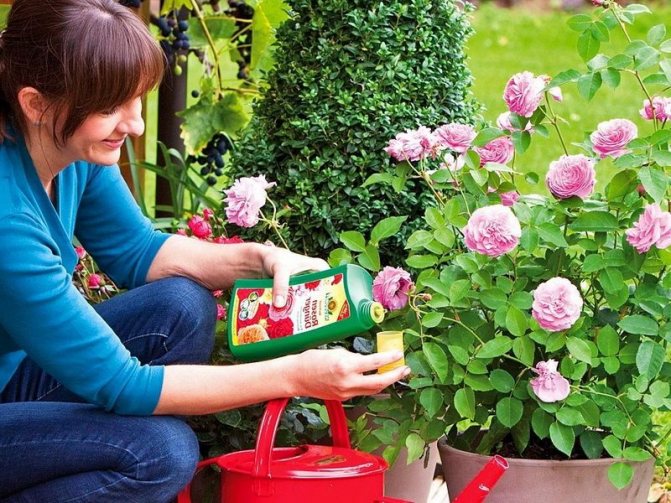

A balanced set of trace elements will provide roses with nutrients necessary for development and flowering for the entire season. It is possible to highlight such drugs as "Hera", "Agricola-Aqua", "Fertile Leica".
Fresh articles for gardeners, gardeners and florists
Treatment of trees in the spring from pests and diseases
Pruning trees in spring for beginners in pictures step by step
Spring processing of trees and shrubs from pests and diseases
Tomato pick in April 2019 according to the lunar calendar
Reproduction
Reproduction of roses occurs by cuttings. To do this, choose a completely lignified section of the stem with buds, of which there should be at least four. The branches are cut to size about 15 cm and put in water. You can add a growth stimulant that is sold in flower shops. Experts recommend an infusion of willow branches: pour boiling water over finely chopped stems and leave for 24 hours. Then they are used for germination of cuttings of roses.
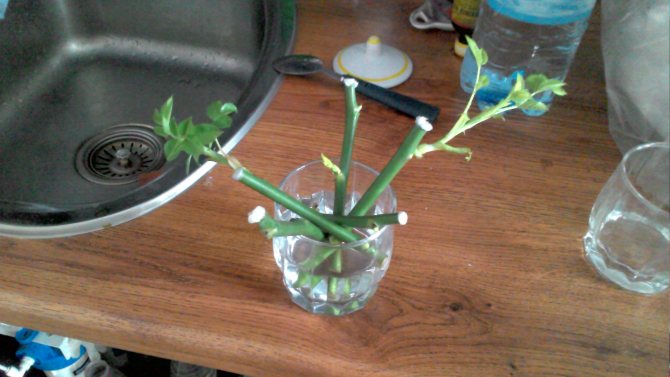

Yeast is a good stimulant. The cuttings are soaked in yeast water for a day - 1 liter of water and 100 g of yeast - then put in clean water.
Honey water protects the cuttings from decay and provides all the necessary trace elements for the successful rooting of the rose.
How to feed a room rose
Miniature roses never cease to be flower queens. They decorate residential buildings, offices, and various public institutions. And in good weather, pots with small roses look great in the garden, giving it a special charm.
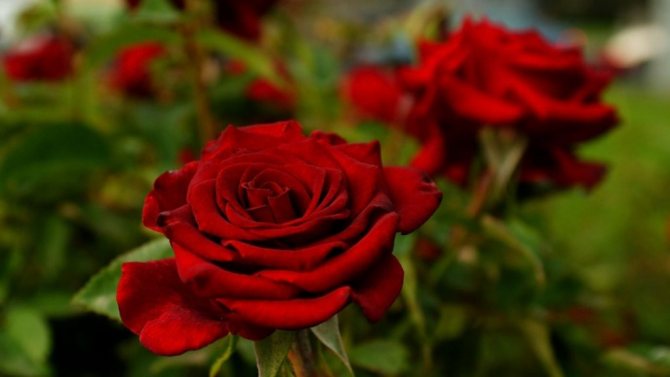

Caring for them, on the one hand, is not too difficult, but on the other, it requires caution and sensitivity from the grower. When choosing how to feed a room rose, be careful - it is very important that the plant at home receives all the necessary nutrients in abundance. Blooming takes a lot of energy. It starts about a month after transplanting and can continue throughout the growing season.
Do I need feeding in spring
This question sometimes arises. Each grower, preparing his favorite bushes for wintering, usually lays in fertilizers, which should be enough so that the plant can safely enter the growing season. But it should be borne in mind that rose bushes have been growing in one place for several years, which means that the soil under them loses most of its nutrients. In addition, plants after winter are most often strongly weakened, and they need a lot of strength to build up green mass, as well as to form the maximum number of buds in the future. Timely mineral and organic fertilizing helps to cope with such a shortage of roses.


Spring feeding will help roses cope with nutrient deficiencies
Compositions for foliar dressing, timing of their introduction
Plants quickly absorb nutrients through the stomata on the leaves.Foliar dressing allows you to return decorativeness to roses, eliminate starvation.
The solution is evenly distributed over the leaves on both sides. The procedure is carried out in the morning, in the evening or in cloudy weather, when there is no bright sun, otherwise there is a high probability of burning the delicate greens. But it is also not recommended to process plants too late - non-evaporated moisture causes rotting. Spraying supplements, but does not cancel, root fertilization.
Climbing and climbing roses react especially well to foliar feeding.
An approximate feeding schedule is shown in the table.
| Time | Top dressing | Result |
| The beginning of the growing season | 30 g urea per 10 l | Prevention of fungus, scaring off sucking parasites |
| April - May | 10 ml of sodium humate is poured into 3 liters of hot water, insisted for 10 hours | Improving root formation, accelerating metabolism |
| 1 tablet of succinic acid per 10 l | Growth stimulation | |
| During budding | Mix solutions of 1% superphosphate and 0.3% potassium nitrate | Increased flowering time, preparation for wintering |
| Before flowering | Microfertilizers according to the instructions | Prevention of powdery mildew, feeding with microelements |
After pruning, prophylactic spraying with 2% Nitrofen solution is carried out, which protects the garden from diseases. To combat pests, it is necessary to treat plants with insecticides Aktara, Decis, Intavir.
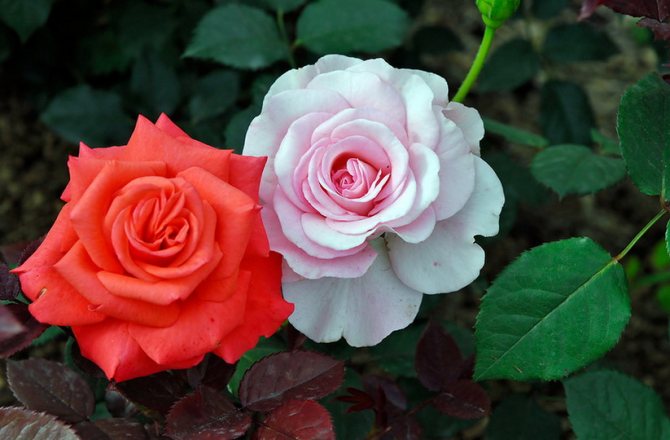

Experienced gardeners are advised to prune roses three times - in spring, summer, autumn.
Features of performing summer dressings
For feeding rose bushes in summer, root and foliar fertilization methods are acceptable.
Under the root, you can water it with a liquid solution or sprinkle with a dry preparation, spreading the grains in a shallow groove, which is dug around the bush, stepping back 15-20 cm from the stems of the rose. Be sure to cover the fertilizer with soil (volatile phosphorus).
Spraying on the leaves is used between them. Through the leaf plates, the plant assimilates more than 70% of nutrients. It is advisable to spray the back of the leaf as well, as there are more absorbent tubules on it.
During irrigation, the fertilizer concentration should be lower than in root solutions. If the dosage is not observed, leaf burns are inevitable.
The benefits of feeding also depend on other factors.
- You should not fertilize the rose garden at low air temperatures - the plant is not able to fully assimilate nutrients.
- Frequent heavy rains wash food into the deep layers of the soil - it is worth adding additional fertilizing to the soil in the form of granules, they dissolve more slowly.
- Heat and strong winds deplete the soil and disrupt its structure. Fertilization is carried out only after abundant watering, in the evening, so as not to burn the roots and leaves.
Late in the evening, it is also not recommended to water and sprinkle in a cool season, since an abundance of moisture can provoke the appearance of a fungus.
What does a rose need in summer?
Summer is a period of active flowering of ornamental crops. At this time, gardeners stop feeding plants with nitrogen and switch to potassium-phosphorus compounds. Excessive concentration of nitrogenous compounds provokes growth and density of the crown. As a result, rose bushes produce fewer buds. At the same time, the dimensions of the flowers become smaller, and the shape is deformed. Phosphate fertilizers neutralize the excess nitrogen in the soil and stimulate the bud formation process.
Potassium is the second trace element required by roses at the time of flowering. It increases the suction properties of the rhizome, as a result of which the inflorescences hold on to the stem more firmly and do not fall off longer. These baits can be applied several times per season:
- before the appearance of flower ovaries,
- during budding;
- to maintain the decorative effect of flowering shrubs.


Lack of potassium
Mineral complex preparations, organic matter can be used as fertilizers.From mineral preparations, superphosphate, potassium sulfate, ammonium nitrate, potassium salt and others are suitable.
If the soil was well prepared when planting, then you don't have to worry about how to feed the roses in the first year of growth. The added nutrients will last for the season.
Organic
Correctly selected organic matter will affect the composition of the soil, making it more fertile, reduce weeds and attract garden worms. The latter loosen the soil, thus enriching it with oxygen, which has a positive effect on the development of the root system.
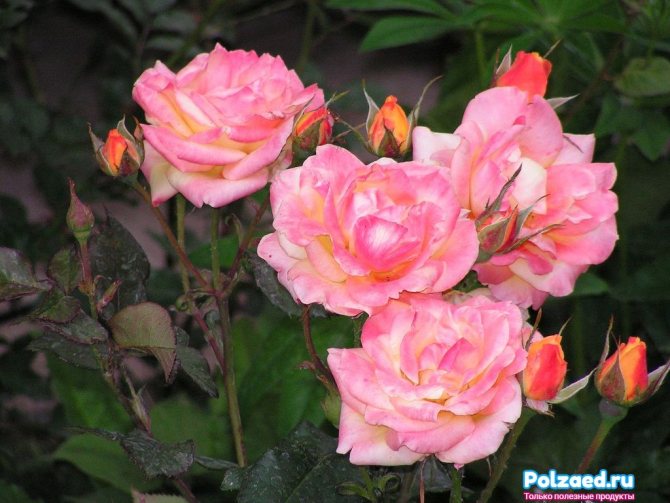

The following organic products are used as top dressing for domestic roses in the spring:
- chicken droppings. The agent is introduced with caution - an excessive amount can provoke a burn of the roots or the ground part of the plant. Applied during the growing season and flowering;
- cow dung. It is important to strictly adhere to the dosage, since such a drug in high concentration has an aggressive effect. They bring it in after the heat is established;
- infusion of weeds. This product does not have an unpleasant odor, so it is suitable for fertilizing bushes growing near windows or in the yard.
The gardener himself chooses how to feed the roses in the spring. Practice shows that in many respects the effectiveness of soil enrichment measures depends on the raw materials used for fertilization, soil composition and some other factors.
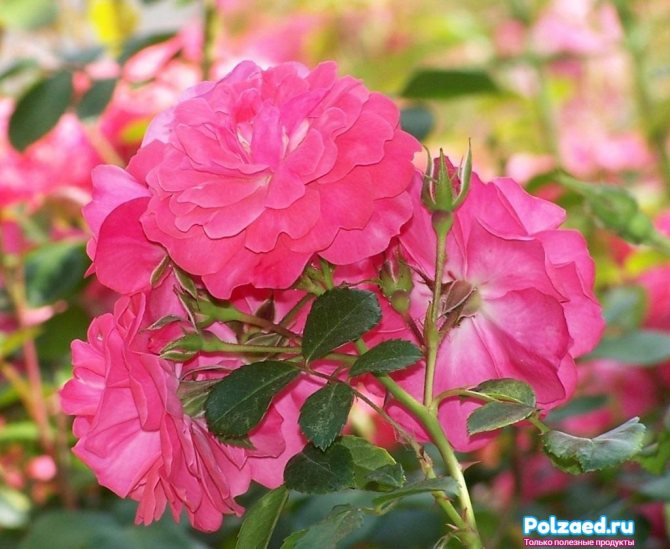

Minerals needed to grow roses
Macronutrients
The content of macronutrients in the soil affects the health and splendor of the bushes.


The health and splendor of the bushes depend on the macronutrients contained in the soil.
Thanks to phosphorus, the bush is renewed with healthy shoots. It stimulates the emergence of new roots, affects the number of buds and the size of flowers.
Important! An excess of the mineral disrupts the flow of other nutrients. The rose bush begins to fall off. You can apply fertilizer all season.
Mineral fertilizers necessary to stimulate plant growth are applied in a complex. For example, potassium is very important. It promotes healthy growth of shoots and leaves.
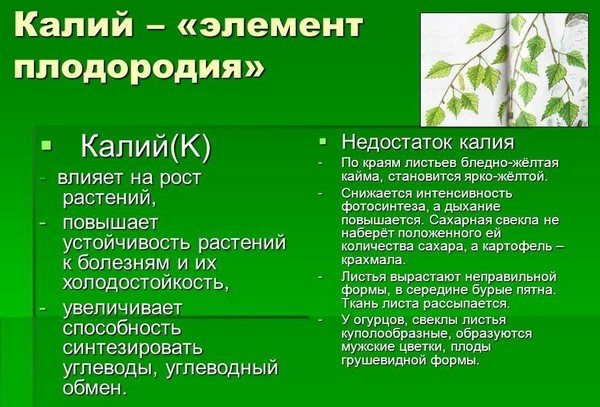

Why is potassium needed?
Potassium deficiency is manifested by drying out along the edge of the leaves, fragility of shoots, deformation of young leaves.
Fertilizers containing nitrogen are applied in the spring as it promotes the development of lush, healthy foliage. Autumn fertilization with nitrogen leads to the growth of young shoots during the cold season and their further death. It is necessary to follow the top dressing recipe - an overdose of fertilizer will delay flowering and increase the risk of developing diseases.
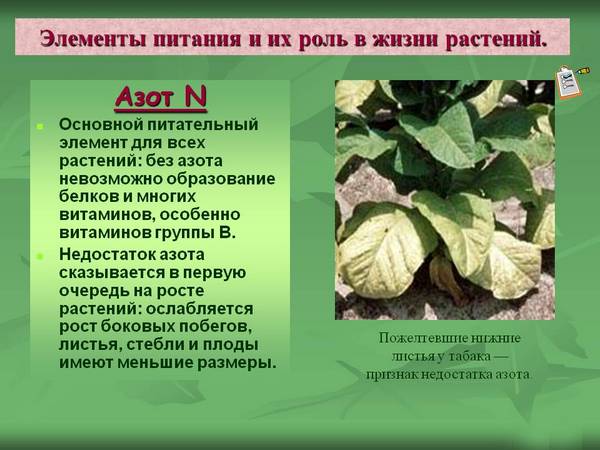

Why is nitrogen needed?
Deficiency of magnesium in the soil leads to crushing of the buds, dropping of the lower leaves, the appearance of chlorotic spot on the leaves. The plant does not release basal shoots. With a sufficient amount of fertilizer, bud setting improves, the color saturation of the petals increases.
With a deficiency of iron in the soil, the plant develops chlorosis. Young leaves turn yellow, retaining green veins, gradually discolor and fall off. There is a decrease in the size of the leaves, curling around the edges.
Important! In the absence of correction, the root system suffers.


Why do you need iron?
Trace elements
The content of trace elements in the soil is important.
A lack of boron in the soil disrupts the root system. This makes it difficult to get the required minerals. The point of growth of young shoots dies off. Plant pollen loses its ability to germinate. The buds fall, the leaves are deformed, bending to the bottom (the shape of an "overturned spoon"). These problems are more common in years with low rainfall.
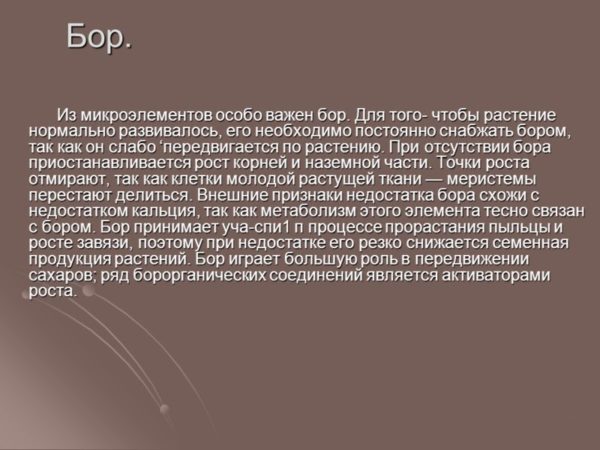

About the need for boron
Thanks to boron, roses are resistant to diseases caused by fungi. It is necessary to introduce a trace element for the entire growing season, since it is fixed in old leaves and is lost with their fall.
Manganese supports the process of photosynthesis through the formation of chlorophyll.
Important! The deficiency of the mineral is manifested by chlorosis of the leaves of the middle layer.
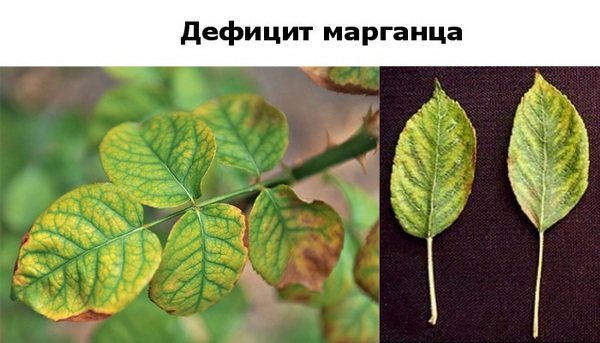

Consequences of Manganese Deficiency
Using yeast
Using baker's yeast to fertilize the soil has several advantages:
- rich content of vitamins (group B), trace elements;
- lack of chemicals;
- profitability;
- beneficial effect on the soil.


You can use yeast to feed roses
Yeast is by its nature unicellular fungi. In the ground, they begin to multiply and release nutrients that interact with the soil. Thanks to the waste products of the yeast, oxygen delivery to the plant roots is improved. They release phosphorus and nitrogen into the soil, stimulate the formation of humus.
Important! The main condition for using yeast is warm weather. Therefore, you need to make top dressing before the buds bloom in the warm spring.
There are recipes using fresh and dry yeast.
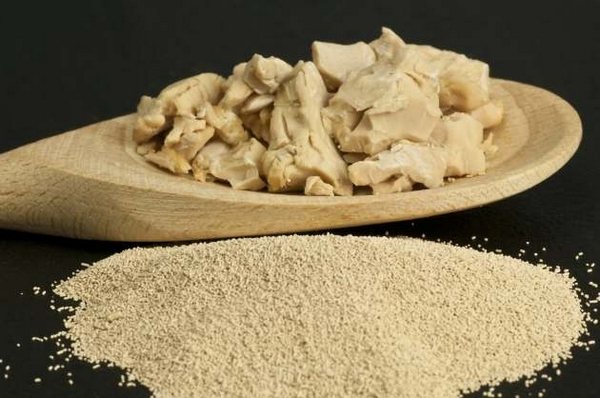

Dry yeast can be used
When using dry yeast, take 10 g of the ingredient per 1 liter of warm water and 2 tbsp. l. Sahara. The mixture is left in a warm place for the fermentation process. The stock solution is diluted with fifty liters of water. A liter of solution is applied under each bush.
100 g of fresh yeast is mixed with 1 liter of warm water and 2 tbsp. l. Sahara. After the mixture is fermented, dilute it with five liters of water. Apply a liter of working solution under each bush.


You can also make a top dressing with fresh yeast
Important! The prepared solutions must be used immediately.
When using yeast, some rules must be followed. To prevent the leaching of calcium and potassium from the soil, it is necessary to use ash. The solution should not come into contact with the leaves. Top dressing should not coincide with the moment of bud formation. It is not necessary to carry out the introduction of yeast in the fall.


Better to combine the use of ash and yeast
Growth stimulants
Biostimulants are a group of fertilizers containing growth hormones. They promote active germination of seeds, the creation of an effective root system, and intense flowering. The preparations increase the resistance of flowers to stress factors and diseases.
Gibberellin is a phytohormone that works at the stage of seed germination, stem growth, transition to flowering and bud formation.


Gibberellin
Auxin is a universal stimulant. It directs the growth of shoots, roots, increases the development of the bush, affects the amount of formation and maturation of buds.
Cytokinin is a phytohormone that ensures active cell proliferation. The effect of the application appears after 14-15 days. In horticulture, it is used as part of a cytokinin paste. The introduction of the drug develops lateral shoots. The bush acquires splendor, its flowering period increases.
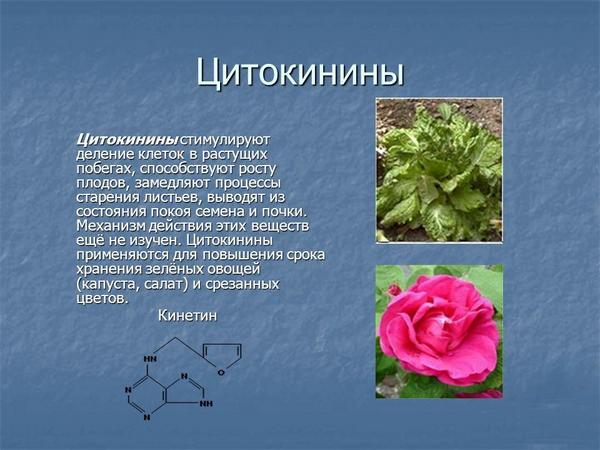

About cytokinin
Brassinolide is a representative of a new group of brassinosteroids. The peculiarity of the drug is that it supports healthy processes in the plant under stressful conditions - fluctuations in air and soil temperatures, insufficient moisture, infection.
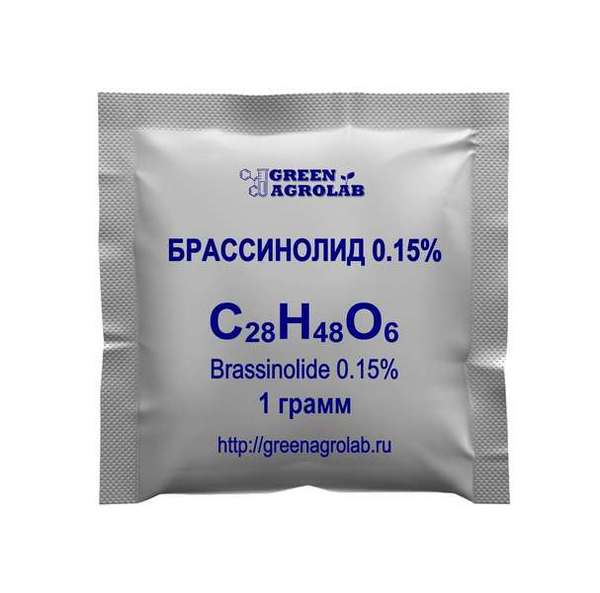

Brassinolide
"Bud" contains derivatives of gibberellic acids.
Properties:
- used for processing shoots before and after the first flowering;
- increases the number of ovaries, ensures their stability.
A solution is being prepared for spraying the bushes at the rate of ten grams per ten liters of water. One liter of working solution is applied to one bush.
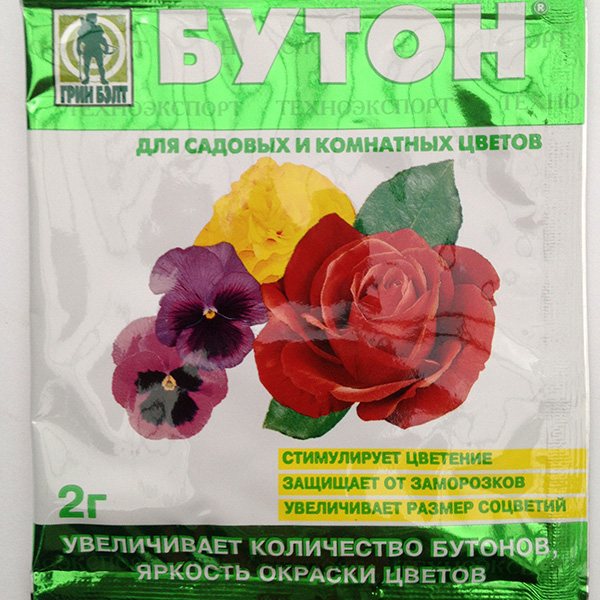

Means "Bud"
Zircon accelerates the onset of flowering and prevents bud shedding. The effect is enhanced when used together with the drug "Cytovit".
Important! The combination of stimulation of the root system and a set of micro and macro elements gives the maximum result.
Fertilizer: essential plant nutrition
For good growth, maintenance of the correct metabolism in flowering plants needs a lot of nutrients, respectively, which they take mainly from the soil.But, unfortunately, the reserves of nutrients in the soil are limited, annually growing plants, harvesting crops, removing unnecessary plants from flower beds, we completely remove the nutrients contained in the earth. Therefore, the stocks of nutrients in the soil should be systematically replenished by fertilizing with fertilizers.
Plants need three essential nutrients - nitrogen, potassium and phosphorus. In small amounts, plants need magnesium, calcium, sulfur, iron, zinc and manganese.
- Potassium, is indispensable for the life of plants, it constantly regulates the water balance in plant cells, strengthens the structural tissue of the plant and significantly increases frost resistance.
- Phosphorus stimulates flowering and is especially necessary for energy metabolism.
- Nitrogen- it is a substance necessary for fast and healthy growth, it is indispensable for the formation of green leaves (chrolophyll), which plants need in their own way for photosynthesis. Obviously, with a sufficient amount of nitrogen, the plant develops well, grows quickly, and the greens have a juicy color.
How to properly feed roses
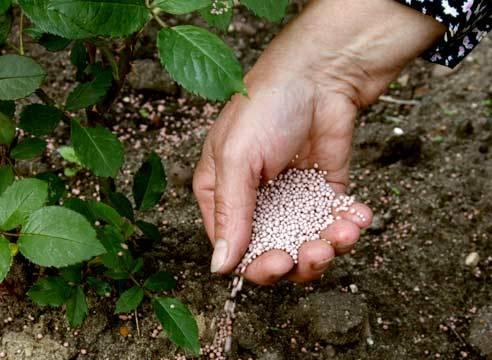

In different periods of the growing season, roses need different substances. Some are needed by the plant for fast and healthy growth, ripening of the grown shoots for winter, and others for lush and abundant flowering, preparing the root system for winter and laying flower buds for the next year. Let's find out what roses need at different times of the year.
How to fertilize roses in spring
In the spring, roses wake up from hibernation and start growing. They should gain as much green mass as possible before flowering, because then all the power will go to the formation and blooming of the buds. Therefore, the main element that the shrub needs at this time is nitrogen.
If it is better to apply nitrogen fertilizer immediately after the ground thaws, when the first points begin to bloom, then closer to summer you need to fertilize the plants with potassium and phosphorus. They need these elements to form healthy buds and prepare for flowering. Boron is another important substance. With its lack, flowers fall off without opening. Even a large number of formed buds will not save you here: they will still fall off, and the flowering will be very poor.
Top dressing of roses in summer
In summer, all the elements are important for roses: potassium, phosphorus, and nitrogen. Potassium and phosphorus are necessary for recovery after the first wave of flowering, because during it the shrub used all their reserves that were in the soil. And nitrogen is needed for flowers so that young shoots grow, strengthen and become lignified. If they do not have time to do this before the frost, then in winter they will die. Although, most likely, an experienced gardener will cut them back in the fall during sanitary pruning.
Autumn feeding
In the fall, roses should be fed with potassium and phosphorus. These elements will help to lay the flower buds and prepare the plant for hibernation. But in no case use nitrogen fertilizers at this time, since the plants should stop growing, and not start a rapid gain in mass. Another reason why nitrogen should be absent in autumn feeding is that if the plant does not use it, then it will evaporate during the winter or go away in the spring along with melt water. You feed the bush in vain.
How to feed roses for growth
If the bushes grow sparse and frail, most likely, the soil has become too poor, and they have nowhere to take building material. Correct feeding will help to correct the situation. Organic fertilizers influence growth best of all. They contain a lot of easily assimilable nitrogen. Another advantage of organic matter is the presence in it of a small amount (and sometimes a large amount, like in chicken droppings) of other trace elements, which are also important for healthy growth. So, magnesium, iron and calcium will help the shrub develop correctly and prevent deformation of its shoots and leaves.
Mulching
In the spring, immediately after pruning, mulching is recommended. Manure or garden compost is perfect for these purposes. Wood shavings, eggshells, bone meal, coconut fibers, onion husks are also suitable for roses. Mulch is not a fertilizer and has little nutritional value, but it retains moisture and essential nutrients in the soil. It is especially useful in summer, when all liquids evaporate quickly due to the heat.
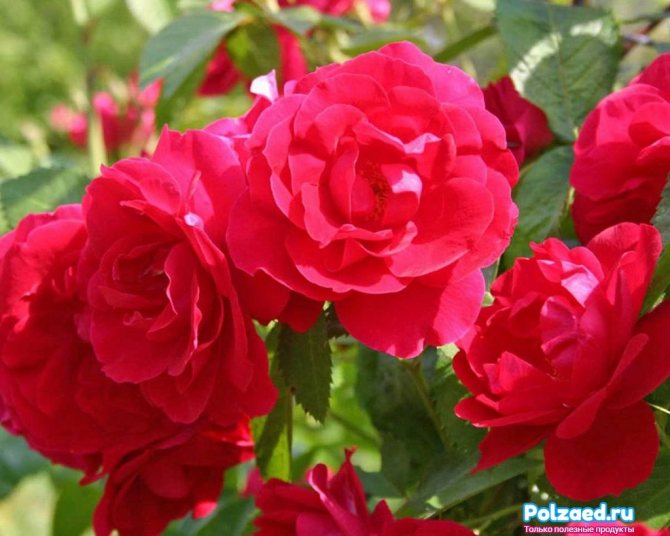

Also look out for ground cover plants. They perform the same function, and some gardeners find this option more effective than mulching. Scyllas, crocuses, hiondoxes will do. This option will not only benefit the roses, it will also brighten the garden, creating a color spot in late spring.
Table: Key Signs of Nutrient Deficiency
| Name of substance | Signs of a lack of nutrition |
| Nitrogen | Young leaves turn pale green and reddish dots appear on them. The shoots of the plant are shortened, flowering is poor. The rose also has a decrease in winter hardiness. |
| Phosphorus | The leaf plates become dark green with a reddish tint. Brownish-purple stripes and spots form on the edges of the leaves. At the same time, the shoots become weaker and deformed. Flowering occurs later than the due date, and the rose loses its decorative effect |
| Potassium | The leaves turn yellow at the edges, while the veins remain green. Over time, the leaf plates become reddish with brownish edges, then blacken and die off. The flowers of roses are small |
| Magnesium | First, on old, and then on young leaves, spots form. Leaf plates eventually turn reddish with green edges, and then fall off |
| Iron | The leaf plates turn yellow, and a bright green stripe remains around the veins. Over time, the leaves turn almost white and begin to fall off. |
| Calcium | The roots of the rose do not develop, the peduncles die off, and the young leaves are deformed |
| Manganese | Old leaves begin to turn yellow between the veins from the edge to the center |
When to apply top dressing, at what temperature
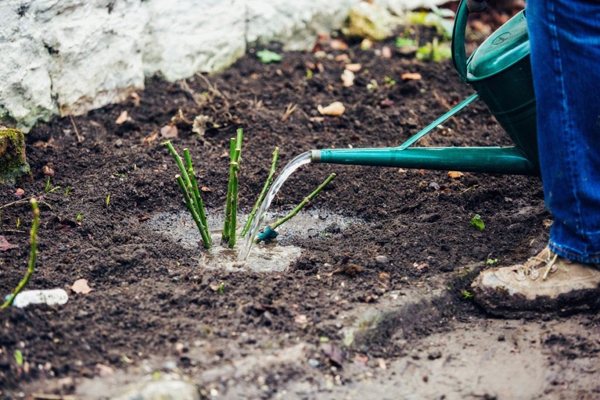

The very first feeding is carried out immediately after the spring pruning of the bushes in the rose garden - around mid-April. By this time, the snow has already melted in almost all regions of the country, and the soil will warm up to + 5 ... + 70C. This indicator is considered optimal - the root system of roses begins its work, the plant wakes up, the buds turn red and swell. The second and the following dressings are carried out after 10 ... 14 days, alternating organic and mineral fertilizers.
How to fertilize


There are several ways to fertilize roses. Gardeners often use:
- Dry method... It consists in applying fertilizers to the soil without using solutions. This method is suitable for feeding roses with humus or compost, ash, mineral granular fertilizers. Fertilizers are simply poured under the bush and loosened the soil so that they are evenly distributed. In the case of compost and humus, it will also be necessary to remove the top layer of soil 2-3 cm thick. If you pour organic matter without this procedure, then the root collar will be excessively buried.
- Wet method... It consists in applying fertilizers diluted in water. Sometimes they are not solutions, but infusions. Roses are fed wet with fresh manure, chicken droppings, crystalline and liquid mineral fertilizers, wood ash and even grass.
- Root method... It consists in the fact that fertilizers are applied directly under the root of the plant. Moreover, it is suitable for making both wet and dry dressings. But if the dry method is always root, then the wet method has varieties.
- Foliar method (leaf)... Foliar top dressing consists in spraying the foliage with a solution of ash or mineral fertilizers. This method is always wet and is not suitable for organics.
Advice! If the plant has clear signs of mineral deficiency, then they should be applied in a leafy way, and after a few days - additionally by root. If there are no such symptoms, then for prevention, you can use both root and leaf methods. In the cold, it is better to fertilize with the dry method, and in the warmth - wet.
Important nuances and useful recommendations
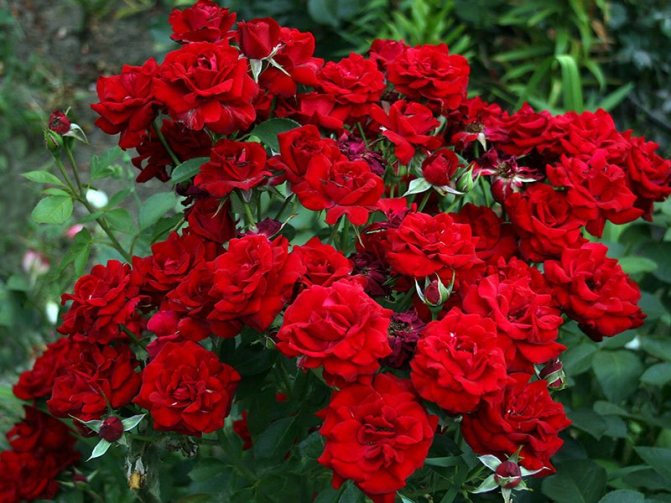

Roses need a lot of nutrients in summer.
Roses are recommended to be fed throughout the season (spring-autumn). Moreover, a greater number of procedures occur in the summer, when these plants have a period of budding and flowering. In this case, feeding is required in August and after flowering. In this case, it is recommended to fertilize rose bushes no more often than once every 2 weeks, so that nutrients have time to be absorbed.
If the roses were planted in fertile soil, then fertilization should be started one year after planting.
Any fertilizer is suitable for roses, but in the summer it is not recommended to make top dressing with a high nitrogen content, since they promote active growth and negatively affect flowering. It should be borne in mind that this nutrient is found in considerable quantities in organic matter and therefore should be used only after the plants have faded. When applying dressings, it is necessary to strictly adhere to the recommended dosages, since excess nutrition is harmful. The procedures should be carried out in cloudy weather, applying fertilizers to a pre-moistened soil. After applying top dressing, the roses should be watered and the soil should be loosened.
Do not foliar feed on a rainy day. If it rains after fertilization, it is recommended to repeat the procedure.
Features of feeding different types of roses
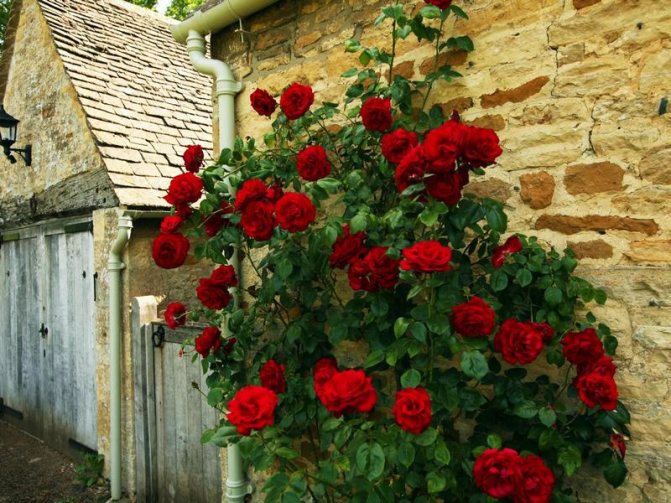

Semi-climbing roses require enhanced feeding in August
It is possible to fertilize plants in the summer according to the general scheme of feeding, but it is advisable to take into account some of the features of different varieties. Individual additional feeding is required for semi-pendant species. Their feature is a significant number of leaves and stems, and it is more difficult for them to survive the winter with such an abundance of vegetative mass. Therefore, at the end of summer, it is recommended to feed semi-vine species with complex fertilizer for roses.


Climbing roses love organic feeding the most.
Climbing roses prefer organic. In summer, they can be fed with herbal infusion and ash. But such fertilizers should be applied in small quantities, since they contain a lot of nitrogen.


Ground cover roses are recommended to be fed with urea
Ground cover varieties, due to their proximity to the soil, are more likely to be infected with fungal diseases. For this reason, as a preventive measure, they should be sprayed with a carbamide solution in July (4 g of urea per 1 liter of water).
Methods for applying dressings for a lush flowering bush


In order for a rose to bloom profusely, it must be fed with the beginning of each of the budding periods with phosphorus and potassium. But sometimes this is not enough. Now the buds are poorly formed, then they are formed, but they fall off. In this case, you can help the rose in the following ways:
- Leaf dressing... It's like an ambulance, through the leaf of the plant, minerals are obtained immediately after spraying. And the sooner they are delivered to the rose, the better it will bloom.
- Top dressing with boron... It often happens that the buds fall off. And in this case, emergency foliar feeding with boric acid will help.
- Top dressing with Zircon... This is not really a fertilizer, but a growth and flowering stimulator. And if your rose is stubborn, then help it bloom by affecting its hormones. Add 40 drops of Zircon to a bucket of water and spray the bush.
Read also: Green rose - photos, prices, descriptions, tips for growing
Advice! You will get an even better effect if you make a complex top dressing of the rose, first with a leaf and then with a root method.Moreover, all fertilizers can be combined with Zircon and diluted in the same bucket.

